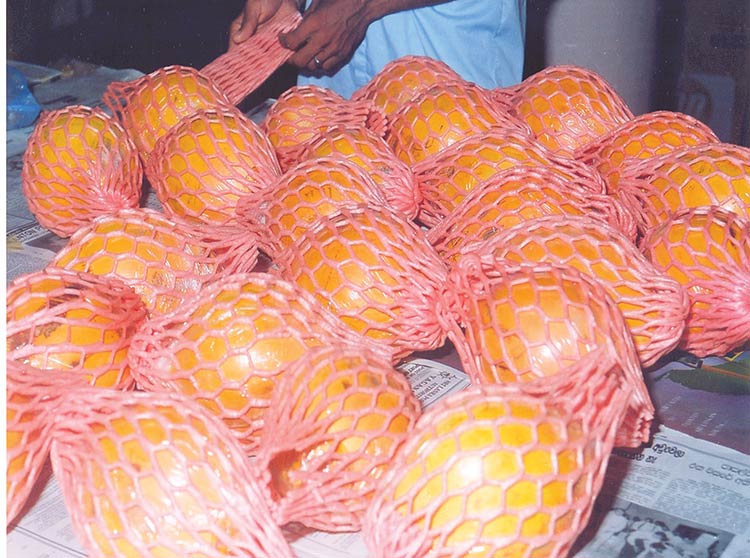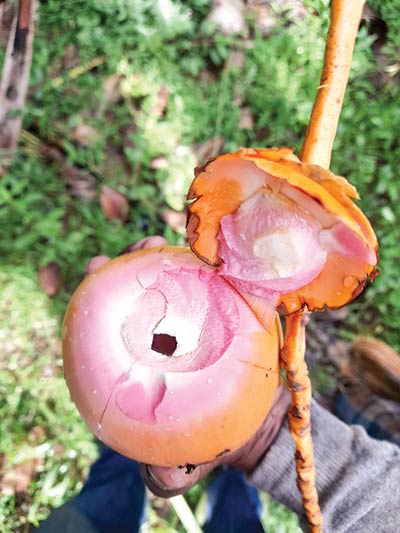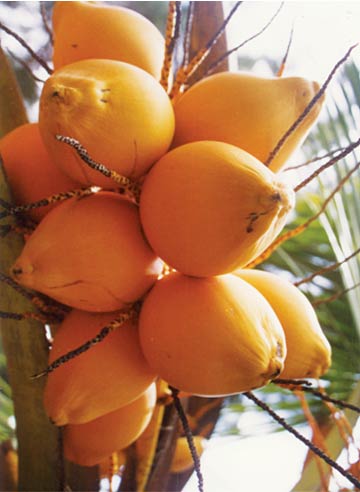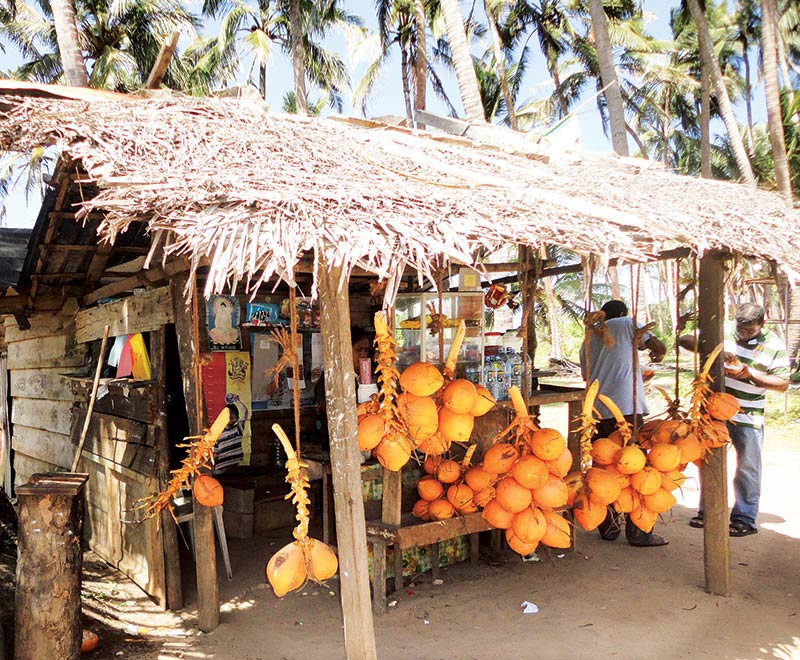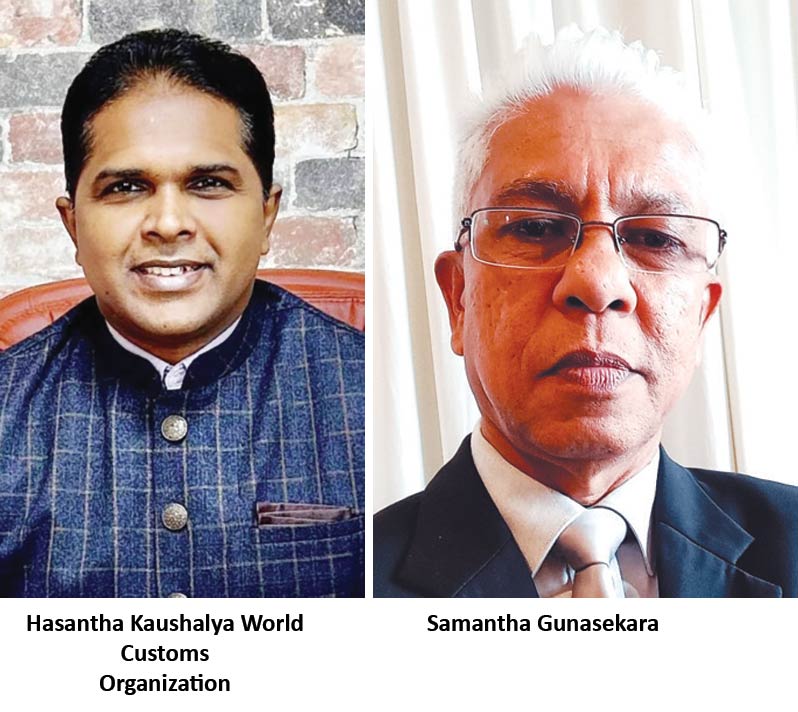Life style
Paws and hands in harmony

With incidents of animals being tested positive for COVID-19 both locally and in various parts of the world, there is a discourse and public anxiety about potential animal to human and human to animal transmission of the virus. We spoke to several authorities committed to animal welfare and virology to find answers and to dispel unnecessary fears.
by Randima Attygalle
The 14-year-old African Lion, ‘Thor’ of the Dehiwala Zoo, gifted by a zoo in Seoul, was reported to be having severe respiratory signs including breathing difficulties and a nasal discharge. Its loss of appetite and lethargy further worried keepers. On an official request made by the Director (Animal Health and Nutrition), Department of National Zoological Gardens, Department of Medical Microbiology of the Faculty of Medicine, University of Kelaniya tested the nasal swab specimens of the sick lion for COVID-19. Fecal samples of the infected animal were sent to the Molecular and Nutritional Biochemistry Laboratory (MNBL) at the Faculty of Veterinary Medicine and Animal Science, University of Peradeniya. Both laboratories confirmed the lion to be COVID-19 positive. This is the first known case of an animal contracting COVID-19 here at home.
The lion was confirmed COVID-19 positive according to the criteria of the World Organization for Animal Health (OIE), Prof. N.P Sunil-Chandra, Virologist and Chair of Medical Microbiology from the Faulty of Medicine, University of Kelaniya told the Sunday Island. “The nature of a specimen, whether it is human, animal or of environmental origin, is not going to alter the result. Hence COVID-19 PCR procedure adopted for the respiratory samples of the infected lion was the same as that which is used for human samples,” he said.
While veterinarians and other staff of the Dehiwala Zoo have been tested, further investigations, assisted by zoo authorities, are being carried out to identify the exact source of infection in the lion. Asymptomatic human infection is a very likely source for the infection in the lion, he said.
“Asymptomatic human infection was incriminated as the source infection in the case of a COVID infected four-year-old Malaysian tiger in the Bronx Zoo, USA which was reported in March last year. Infected pet cats have also been reported in Belgium, Hong Kong, USA and Brazil but there is not enough evidence to change the current opinion of the OIE that neither cats nor dogs appear to be able to pass the virus to people,” the senior professor said.
 SARS CoV-2 infections in minks in the Netherlands and in Denmark have been reported in close proximity to a region with high incidence of COVID-19 in humans. A mutation of the SARS CoV-2 virus in a mink in Denmark and one of the variant was found in several people, he explained.
SARS CoV-2 infections in minks in the Netherlands and in Denmark have been reported in close proximity to a region with high incidence of COVID-19 in humans. A mutation of the SARS CoV-2 virus in a mink in Denmark and one of the variant was found in several people, he explained.
In 1918 the world experienced its worst flu outbreak (commonly called the Spanish flu) due to an influenza virus type A strain H1N1 which emerged in birds infected a third of the world’s human population killing over 50 million people. Three more influenza pandemics followed: in 1957 ‘Asian’ flu (A-H2N2), in 1968 ‘Hong Kong’ flu (A-H3N2) and the 2009 ‘swine’ flu (A-H1N1). “Although milder than the 1918 pandemic, these highlight the constant threat of es to human health.
Emergence of SARS CoV-2 virus in 2019 which led to the current COVID-19 global pandemic further highlights the threat of emerging zoonotic virus infections,” observed Prof Sunil-Chandra. He elaborated on the importance of working on ‘One Health’ concept (the collaborative efforts of multiple disciplines working locally, nationally and globally, to attain optimal health for people, animals and the environment) when confronted with emerging zoonotic infections such as COVID-19.
“Climate changes and deforestation affect animal reservoirs of viruses and due these adverse effects animal migration leads to increased interactions in the animal-human interface. This could spread viruses to new locations and across a wider range of domestic and wildlife species including birds and bats.”
‘Spillover events’ from wildlife via vectors or domestic animals are the starting points for many outbreaks, from influenza to HIV and from SARS to COVID-19, pointed out the Virologist. “Therefore, it is natural to have misconceptions among people with pandemic stress about how new diseases jump from animals to human. Although it is theoretically possible that the virus can be transmitted from an infected animal to human, todate there is no evidence for SARS CoV-2 transmission from animals to humans. Mink is the only animal known to have passed the coronavirus to humans, except for the initial spillover event from an unknown species in China.”
According to the OIE, there is no evidence that cats or dogs spread the disease to humans bit it recommends that sick persons with COVID-19 should avoid contact with pets, including petting, cuddling, being kissed or licked, and sharing food, in order to protect their pets during the time of their illness.
Gorillas and chimpanzees are identified as animals that are at very high COVID-19 risk, pointed out Prof. Ashoka Dangolla, Senior Lecturer in Veterinary Clinical Studies from the Faculty of Veterinary Medicine and Animal Science, (FVMAS) University of Peradeniya. Felines such as domestic cats, tigers and lions are at a medium risk he said. “Veterinarians are very familiar with other animal Coronavirus infections in cats. This has been so for several decades. Feline infectious peritonitis is one such condition with respiratory signs in cats. But we must keep in mind that COVID-19 is a novel Coronavirus (SARS CoV-2) which has the ability to mutate into new variants. Therefore, all possible precautions must be taken while extending love and compassion to our pets.”
Since it is known that cat family members can contract the disease from symptomatic and asymptomatic parties, it is advisable to keep away from them if you are COVID-19 positive or suspected of it, Prof. Dangolla advises. “Cats cannot, according to available information, infect humans. But if you do find your cat having respiratory symptoms, it’s always advisable to take the cat to a vet in the area.”
Care should also be taken not to feed monkeys and to dispose of our waste in an irresponsible manner, the senior veterinarian warns. Dogs are of low risk for developing COVID-19. “So far, COVID- 19 positive dogs have not been reported in Sri Lanka though we test all dogs that are being brought into the country for COVID-19. If a household dog shows respiratory signs such as difficulty in breathing, best advice is to show it to a vet.”
Susceptibility of dogs, pigs and elephants to COVID-19 is low whilst ferrets, mink, mice and rats have very low susceptibility, says the veterinarian. Birds have never been reported to be COVID positive. COVID positive Asian elephants have been documented in India, therefore it is advisable not to go near captive elephants if a person is COVID positive or asymptomatic he notes. “If an infected (symptomatic or asymptomatic) person gets close to a healthy elephant, closer than two meters, the elephant may get infected, but there is no report to say that elephants infect people. Sheep, cattle and even dolphins can get infected but they are at medium risk.”
Since our local vets have been working with Coronavirus and the Sri Lanka Veterinary Research Institute has been producing several vaccines against viruses in animals, we can have some hope that the vets would produce a vaccine against COVID in animals if a need arises, says Prof Dangolla.
The Molecular and Nutritional Biochemistry laboratory of FVMAS, University of Peradeniya conducts tests to detect COVID-19 and the presence of SARS-like viruses in animals. Since September, 2020, the lab had been offering services to the Department of Animal Production and Health (DAPH) to screen hundreds of animals for COVID-19 infection that came into the country. These came as pets through the Animal Quarantine Department at the Bandaranaike International Airport (BIA) which operates under DAPH said Dr. Dilan Satharasinghe, Senior Lecturer from the Department of Basic Veterinary Sciences, FVMAS, University of Peradeniya.
“We have also screened mangroves and toque monkeys as a part of a surveillance programme implemented via DAPH in collaboration with the Wildlife Department and it is an ongoing process,” he said. DAPH and Animal Quarantine Division at the BIA screen all animals coming into the country for COVID-19 infection. Samples are referred to the Molecular and Nutritional Biochemistry laboratory and upon the confirmation of negative results, animals are released to the owners.
The Department of Animal Production and Health (DAPH) implements disease control programmes mainly through Directorates of Animal Health and Veterinary Research. The DAPH has strong structure throughout the country with 26 Regional Veterinary Investigating Centres (RVICs), one located in each district. The disease control programmes are implemented by its islandwide network of 337 Government Veterinary Offices (GVOs) which come under nine Provincial Departments of Animal Production and Health (PDAPH). The central Veterinary Investigating Centres and the technical divisions of Veterinary Research Institute (VRI) provide referral diagnostic facilities for Regional VICs and GVOs in managing diseases.
Curative and Preventive measures are carried out by the DAPH and PDAPH. Disease investigations, epidemiological studies, surveillance programmes and vaccination programmes are being carried out in managing viral diseases.
Animal Disease Act No.59 of 1992 stipulates that no person can import any animal or animal related product without the permission of the Director General of Animal Production and Health. “This provision is to prevent the entry of any exotic disease to the country. Accordingly, animals, animal products, veterinary products and biological imports are controlled by the DAPH by issuing pre- clearance approval for such imports,” said the Director General of Animal Production and Health, Dr. Hemali Kothalawala.
Quarantine stations are established in ports of entry such as Katunayake, Colombo, Mattala and Jaffna to control imports through air and sea passage. Animal entry is permitted based on negative test certificates of certain given diseases and in high-risk situations animals are being quarantined for a number of days at the quarantine stations or on-farm, explained Dr. Kothalawala. “Apart from these routine protocols, today a COVID-negative certificate is mandatory when importing any animal to the country.”
The Animal Disease Act also requires the Director General of Animal Production and Health to take action to control animal disease spread in the country. Today DAPH has established a diagnostic facility with animal specific RT-PCR antigen kits and an Epidemiological Survey is planned to uncover the factors associated with the COVID-19.
The Veterinary Research Institute (VRI), of DAPH has a long history of vaccine production in Sri Lanka. VRI produces several viral vaccines and bacterial vaccines for the livestock sector in the country. Among the viral vaccines, the most important as Dr. Kothalawala explained, is the one for Foot and Mouth Disease (FMD) which causes severe milk production drop in cows when infected. The vaccine which was first produced locally in 1964 is now developed using the latest technology to enhance the immune duration and its shelf life. “Presently, 50% of the country’s requirement is produced within the country. Recently approved project on FMD control is planning to expand the capacity by two-fold by end of the next year,” Dr. Kothalawala said.
A viral vaccine for goat Contagious Pustular Dermatitis (CPD) which causes severe production loss and kid mortality is also being produced at the VRI. It also produces a live viral vaccine for New Castle Disease which causes a very high death rate among chicken. While a newly invented vaccine with oil adjutant to give lifelong immunity in birds is ready to release for the industry another vaccine is being produced by VRI as well as Veterinary Investigation Centres for warts in cattle, she noted. Several bacterial vaccines are also being produced at the VRI for deadly diseases in cattle and poultry. A vaccine for tick fever which causes severe economic losses in milk production especially in high producing animals such as cattle and buffalo is also being produced at the VRI.
Life style
King of coconuts heads for a golden future
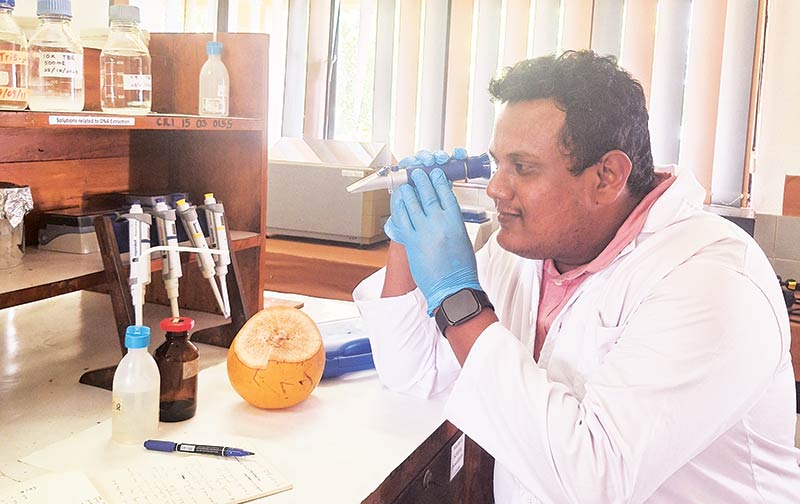
Characterized by its golden exterior, Sri Lankan King coconut or thambili is endemic to the island. In a bid to tap a premium global niche market for this golden nut which traditionally equaled the modern-day saline, the Coconut Research Institute has embarked on ambitious research which is promised to be a ticket in obtaining Geographical Indication (GI) Certification for the much-loved thirst quencher.
BY RANDIMA ATTYGALLE
Traditionally in Sri Lanka, a guest is welcomed with a tall glass of refreshing thambili water. A popular pre-lunch drink, thambili translating to ‘king coconut’ befits this golden-hued nut endemic to Sri Lanka. Thambili is an integral part of many Lankan lives. From being an organic thirst-quencher to a notable base of ayurvedic medicines, this king of nuts even occupies the pride of place in religious and cultural landscape of the island.
Bunches of thambili are often used for decorative purposes at traditional cultural festivals. Naturally sterile, thambili water had been a trusted antidote of native physicians since time immemorial. A traditional substitute for modern day life-saving saline, a bottle of thambili water or even a bunch of thambili was often taken by locals when visiting a recovering patient. Its jelly-like kernel commonly called londha is another edible delight.
Endemic variety
“In many coconut-growing countries, there are primarily two types of coconut palms: Tall and dwarf. Only a few countries have recorded intermediate types, and Sri Lanka has one such variety called Aurantiaca, which means orange coloured in Latin. Within this variety, there are four types of coconut, including king coconut – Nawasi Thambili, Rathran Thambili, and Bothal Thambili. King Coconut is considered endemic to Sri Lanka. Although populations with a similar appearance have been recorded in other countries, they belong to the red dwarf variety. Only Sri Lanka has a well-distributed population of king coconut,” says Dr. Auchithya Dissanyaka, Head of the Genetics Implant Division of the Coconut Research Institute of Sri Lanka (CRI).
GI for a premium price
In a backdrop where the demand for thambili or Sri Lankan king coconut in the international market is on the rise, the CRI is now in the process of differentiating the other dwarf varieties from the Sri Lankan king coconut. The effort is perceived to be a gateway in obtaining the Geographical Indication (GI) certification for our thambili.
GI is an international labeling system that identifies a product originating from a specific geographical area. It recognizes qualities, characteristics, or the product’s reputation that are importantly linked or attributable to its location. GI-certified products which have the international protection are also at an advantage of fetching a premium price over non-GI competitos. Sri Lanka obtained its first-ever GI certification in 2022 for ‘Ceylon Cinnamon’ from the European Union.
Booming beverage industry
Our king coconut is mainly exported as whole nuts and bottled/canned coconut water. From only 2.96 million nuts in 2014, local king coconut exports have risen to 12.91 million nuts as of 2023. The natural beverage industry is also booming in the international market, creating a high potential for the coconut water industry to become a high-value export industry. In 2022, the coconut water market was worth USD 5.2 billion, and it is estimated to increase to USD 20.24 billion by 2030 (zionmarketresearch.com).
“While other coconut water exporting countries use water from either tall or dwarf varieties, Sri Lanka has a unique opportunity to compete in the international market with its indigenous king coconut variety which is of intermediate type. Brazilian Green Dwarfs and Aromatic Green Dwarfs from Thailand are two main coconut varieties in the beverage coconut industry. To successfully compete in the international market, it is crucial to distinguish king coconut from other varieties in the global market,” remarks Dr. Dissanayaka.
The scientists at the CRI are presently conducting molecular and biochemical studies for this purpose, she says. They are also in the process of collecting king coconut germplasm to establish a gene bank to conserve the genetic material of king coconut. “We are selecting best mother palms across the country to go for island-wide characterization and we are almost nearing completion. Following that, we are moving into specific characterization which will differentiate our king coconut from other varieties,” explains the scientist. The project is supported by connected institutions of the CRI including the Coconut Development Board and the Coconut Cultivation Board.
Ongoing research
In addition to the Morphological and Molecular diversity related researches on germplasm conservation which will generate information required to obtain GI, CRI’s king coconut research branches out to several other areas. “We are also carrying out nursery experiments to enhance effective seedling production, floral biology related researches to enhance the breeding programmes and mother palm collection to produce seedlings with good genetic potential,” explains Research Officer, Genetics and Plant Breeding Division of the CRI, Oshan Thilakarathne.
Sri Lankan king coconut is still largely confined to home gardens although several plantation companies have now come forward to expand the cultivation to plantation level. “The fact that our nuts are largely sourced from home gardens also render it to be fully organic – a factor which enables us to maintain a niche in the international market,” says Thilakarathne who goes onto cite its health properties. “It is a natural beverage high in minerals and is ideal as a sports drink today. In Ayurveda, king coconut water is used to treat renal and urinary tract related diseases.” King coconut water is also considered a dietary antioxidant.
Growing export market
Sri Lanka’s king coconut export market is growing and the possible GI Certification could take it to the next level, says CRI’s Senior Research Officer Nilmini Jayalath. “Ever since we started exporting from around 2010, our king coconut export volume has grown bigger and last year we exported 12.9 million nuts. Our leading buyers are the Middle Eastern countries, Singapore, Maldives, Japan, France, Switzerland, and Germany.” Although king coconut water is exported in value added forms such as in sachets, bottles and in cubes, the demand for ours as whole nuts is much bigger because in the international market, the demand for the natural form is intense,” says the Senior Research Officer.
The scarcity of nuts is one of the major challenges to reach the full potential of our king coconut exports remarks Jayalath. “Local consumption alone demands increased volumes and during the last dry season the nut price went up to Rs 200-250 in the local market. Therefore, to increase the availability of nuts, the Coconut Cultivation Board has initiated many schemes including king coconut villages,” notes the scientist.
Harnessing new technology
In addition to the king coconut characterization studies, the comprehensive research programme on king coconut includes the development of tissue culture technology, and strategies to mitigate the seasonality of production. “By addressing these aspects, CRI aims to not only boost yields but also ensure that the industry can meet growing consumer demand year-round,” says Dr. Nayanie Aratchige, Acting Director of the CRI.
The CRI has developed technology to increase the shelf life of young king coconuts, aiming at enhancing the export potential. The new technology developed by the CRI encompasses the largely untapped potential of king coconut trade due to challenges in preservation and transportation, offering solutions that enhance the shelf life and quality of nuts. “Preserving the freshness and nutritional value of king coconut during transit enables tapping distant markets without compromising quality. Producers and exporters can access further information and learn about our trainings by calling the CRI on the short code 1928,” Dr. Aratchige concludes.
(Pic credit- Coconut Research Institute, Wikipedia)
Life style
Stolen from the wild: Confronting the crisis of illegal wildlife trade and biopiracy

Nations Trust WNPS Monthly Lecture
By Samantha Gunasekara & Hasantha Kaushalya
Thursday, November 21, 6 pm, Lotus Hall, BMICH
The Wildlife and Nature Protection Society (WNPS) is committed to driving awareness and action on critical conservation issues. Through its monthly lecture series, WNPS brings to the forefront the often-overlooked crisis of illegal wildlife trade (IWT) and biopiracy—issues that threaten not only Sri Lanka’s biodiversity but the global ecological balance. The November edition of Nations Trust WNPS lecture aims to shed light on the dark underworld of wildlife trafficking, expose legal gaps, and highlight the need for collective action to protect natural heritage.
Illegal wildlife trade is a high-stakes, clandestine operation that generates up to $23 billion annually, fueled by complex networks that exploit animals, plants, and entire ecosystems. Despite global regulatory efforts like CITES, the trade continues to grow in sophistication, often outpacing enforcement. Sri Lanka’s unique wildlife, including endangered species like pangolins and star tortoises, is particularly vulnerable to collection, poaching and trafficking, with devastating impacts on ecosystems and biodiversity.
Illegal wildlife trade devastates biodiversity, but biopiracy—exploiting resources through patents—adds a serious, emerging threat. The shift toward Digital Sequence Information enables entire genomes of Sri Lanka’s unique species to be exploited, often without consent or awareness.
This month’s lecture presents a unique opportunity for the public and stakeholders to confront these alarming trends and to understand the role they can play in dismantling the networks that fuel IWT. WNPS invites all who care about wildlife conservation to join this critical session and take a stand against the exploitation of Sri Lanka’s natural resources.
This lecture features two of Sri Lanka’s leading experts on IWT:
Samantha Gunasekara
Samantha Gunasekara, former Deputy Director of Customs, is a leader in wildlife protection, credited with establishing World’s first customs Biodiversity protection cell and has over 30 years in wildlife crime detection and anti-corruption in wildlife crimes. He has led significant efforts in wildlife crime detection, initiated the Sri Lanka Customs Museum, and contributed to national conservation efforts. Recognized with the Presidential Environmental Award, he serves on multiple biodiversity committees and is a sought-after lecturer in conservation.
Hasantha Kaushalya
Hasantha Kaushalya is a prominent figure in counter-wildlife trafficking with over 15 years of experience at Sri Lanka Customs. As a World Customs Organization (WCO) accredited expert on Illegal Wildlife Trade (IWT), he has led technical missions and training workshops for Customs authorities across Asia and Africa. Known for his expertise in detecting and investigating cross-border wildlife crimes in Sri Lanka, Hasantha has also developed a comprehensive training program to strengthen wildlife trafficking enforcement within Customs. His achievements have earned him the 2023 WCO Certificate of Merit for knowledge-sharing and the Wildlife Law Enforcement Excellence Award from the Sri Lanka Wildlife Enforcement Network (SLaWEN)..
The lecture is supported by Nations Trust Bank and is open to both members and non members. Entrance Free.
Life style
Jetwing Hotels wins the Global Responsible Tourism Award
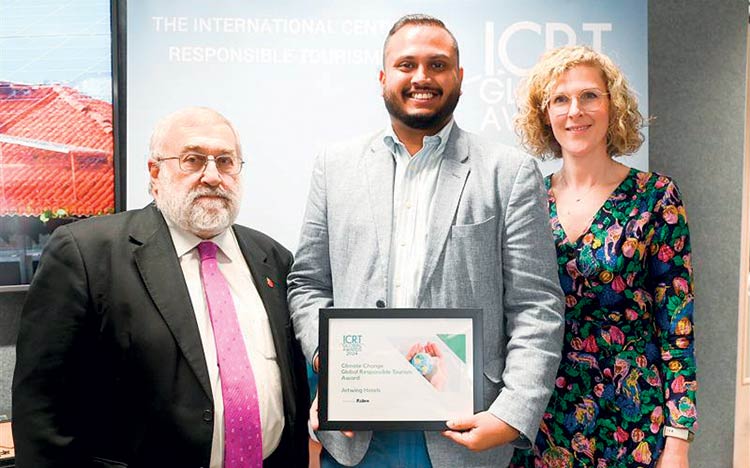
Jetwing Hotels was recently recognized for its contribution to climate action at the recently concluded Global Responsible Tourism Awards 2024, sponsored by Sabre, held in London.
The Global Responsible Tourism Awards has honored six exceptional tourism operators across various categories. These winners, hailing from Africa, Latin America, the Indian subcontinent, Southeast Asia, and the rest of the world, previously secured gold medals in their respective regional competitions. The 33 regional gold winners then advanced to the global stage, vying for recognition in the 20th anniversary year of the awards.
Harold Goodwin, founder of the International Centre for Responsible Tourism, emphasized the importance of concrete action in sustainable tourism. He stated, “Too often, ‘sustainable’ is used abstractly. Responsible Tourism demands tangible actions to improve tourism and transparent reporting of achievements. Today’s award winners exemplify these principles, offering evidence-based, replicable, and innovative approaches that inspire and influence others.”
Tess Longfield, Sabre’s head of sustainability communications and award sponsor, echoed this sentiment, expressing admiration for the finalists’ dedication to sustainable and equitable tourism. She added, “Their passion and commitment to creating a positive impact through travel is truly inspiring. It underscores the power of responsible tourism to make a real difference.”
The judges in the climate action category sought organizations actively decarbonizing tourism operations and pioneering innovative strategies for climate resilience and business continuity. Since introducing its first solar PV system in 2010, Jetwing Hotels has steadily expanded its renewable energy footprint, investing over USD 1 million in 2024 to increase capacity by 1.6 MW. In 2023 alone, Jetwing Hotels generated 1,069 MWh of clean energy, powering 13,490 households and offsetting 608 metric tons of CO2 emissions. The ongoing expansion, currently 90% complete, will further bolster solar PV capacity, tripling its contribution to 24% of total electricity consumption. Beyond solar power, Jetwing Hotels has adopted a holistic approach, incorporating biomass boilers, steam-powered chillers, solar thermal systems, and biogas digesters to achieve over 60% of its energy demand from renewable sources. These efforts further align with Sri Lanka’s renewable energy goals and demonstrate Jetwing Hotels’ dedication to a sustainable future.
Dmitri Cooray, Managing Director of Jetwing Hotels, accepted the award in London, stating, “By advancing energy independence and fostering a culture of environmental responsibility among our staff and guests, we ensure our business practices are both environmentally sound and economically sustainable. Our success demonstrates that even small steps can create a significant impact, inspiring others to take action.” With a legacy spanning over half a century in the tourism industry, Jetwing Hotels has established itself as a pioneer in curating unique experiences and offering legendary Sri Lankan hospitality. As a family-owned brand, Jetwing continues to be a leading advocate for sustainability and responsible tourism, guided by a comprehensive strategy focused on community upliftment, climate action, environment conservation, and resource efficiency. The brand’s diverse portfolio includes a range of luxury hotels and villas, each offering a unique perspective on Sri Lanka’s rich cultural heritage and natural beauty.
-
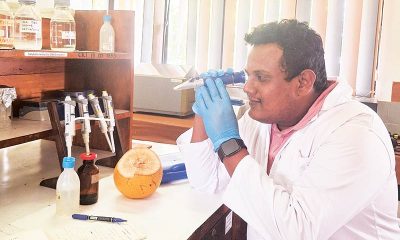
 Life style3 days ago
Life style3 days agoKing of coconuts heads for a golden future
-
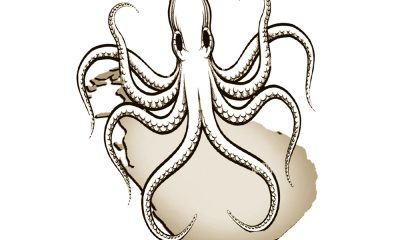
 Features7 days ago
Features7 days agoAdani’s ‘Power’ in Sri Lanka
-

 Latest News4 days ago
Latest News4 days agoColombo district preferential votes announced
-

 News4 days ago
News4 days agoPresident warns his party: “We will fail if we view power as an entitlement to do as we please”
-

 News2 days ago
News2 days agoNPP appoints two defeated candidates as NL MPs
-

 Editorial7 days ago
Editorial7 days agoWhen millers roar and Presidents mew
-

 Midweek Review7 days ago
Midweek Review7 days agoGamani Corea:
-

 Latest News5 days ago
Latest News5 days agoGampaha district: NPP 16, SJB 3


